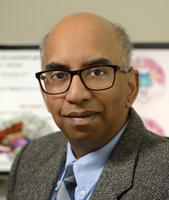Auditory Physiology
Cochlear mechanics
The inner ear is one of nature's more remarkable transduction devices. In particular, the snail-shaped cochlea transduces sounds into electrical signals that are ultimately encoded by the brain. The lay person may like to read this review aimed at parents of deaf children, professionals working with deaf children and deaf people or take a promenade round the cochlea.
Outer hair cells
Since the dramatic discovery of outer hair cell (OHC) electromotility by Brownell and colleagues in 1985, a growing body of evidence suggests that the OHC is responsible for the remarkable frequency selectivity and sensitivity of mammalian hearing. A few movies on YouTube show why the OHC is one of the more unusual cells found in biology. One may claim that no other cell in biology elongates and shortens in response to stimuli at high frequencies.
Papers
- Is the outer hair cell viscoelastic? in Proceedings of the International Symposium on Diversity in Auditory Mechanics.
- An analysis of the hydraulic conductivity of the extracisternal space of the cochlear outer hair cell.
- Hypotonic swelling of salicylate treated cochlear outer hair cells.
- The ratio of elastic moduli of the cochlear outer hair cell measured from osmotic experiments.
- Measurements and a model of outer hair cell hydraulic conductivity. (Errata; Addendum)
- Electromechanical Models of the Outer Hair Cell Composite Membrane.
- A Stokesian analysis of a submerged viscous jet impinging on a planar wall was inspired by the hydraulic conductivity and osmotic experiments.
- The Stokesian flow field of an oscillatory submerged viscous jet impinging on a planar wall was inspired by Brundin and Russell (1994).
Impact of auditory physiology research on deaf education
The impact of research in auditory physiology, especially the importance of early identification of deafness leading to early intervention strategies in capitalizing on the neuro-plasticity of the developing auditory system, can be seen from videos, "Dreams spoken Here" and "Speaking for myself" which can be ordered free from the Oral Deaf Education website. The Mary Hare School for the Deaf, Alexander Graham Bell Association for the Deaf and Deaf Education through Listening and Talking (DELTA) to name but a few, have been at the forefront of oral deaf education. In particular, Mary Hare is the only deaf school in the world where deaf children study music as an academic subject.
